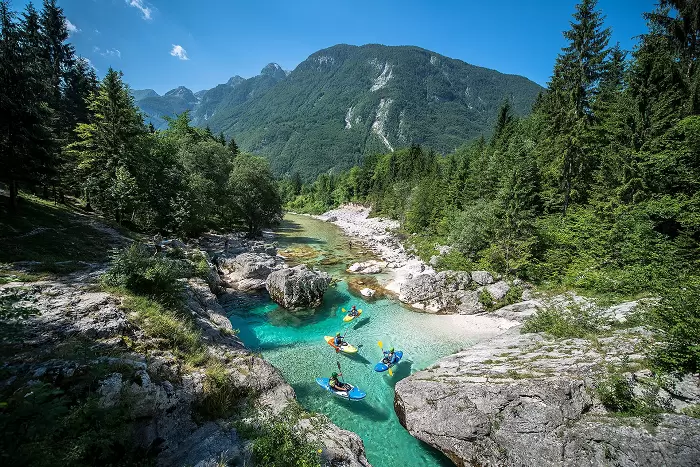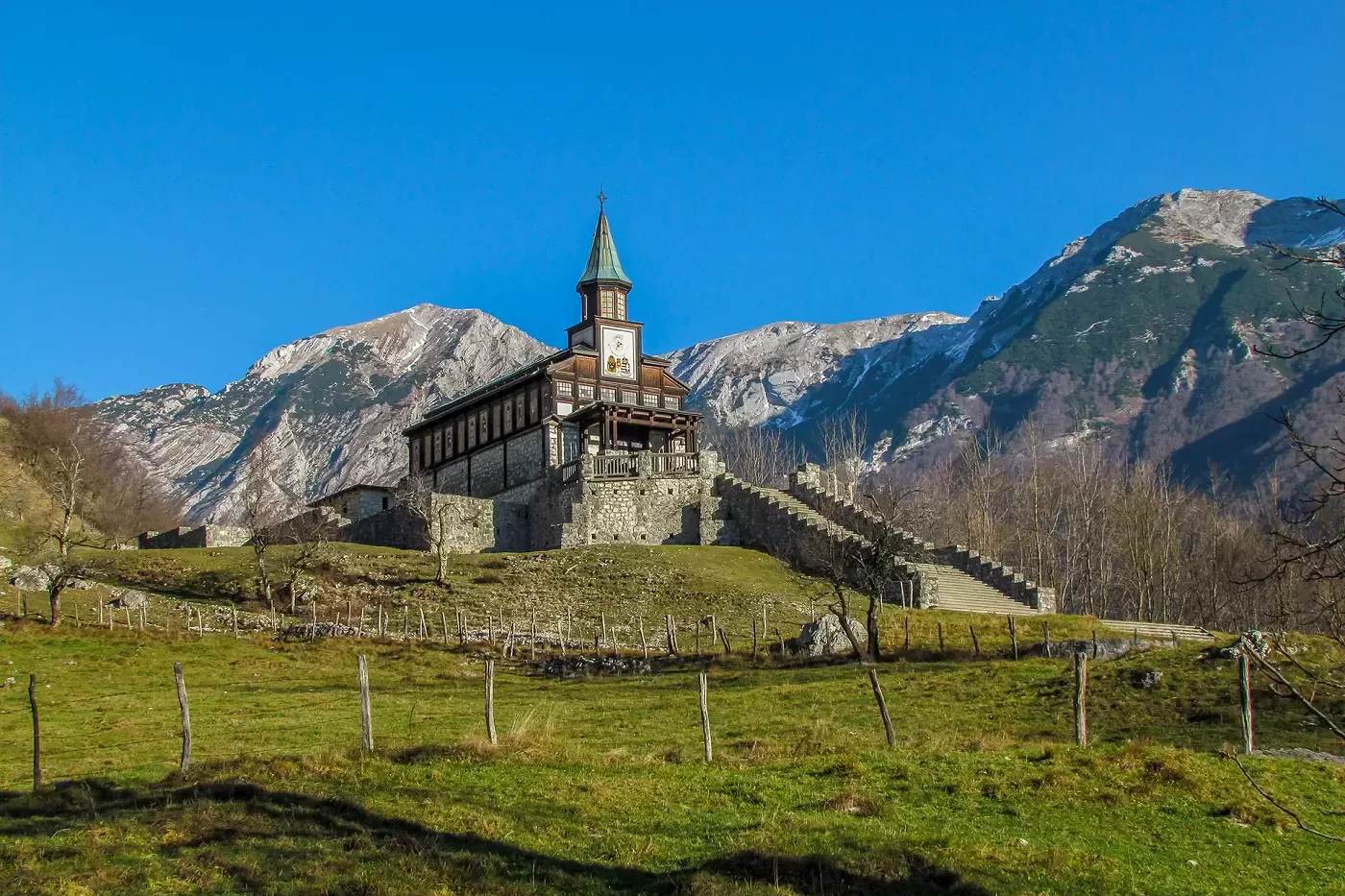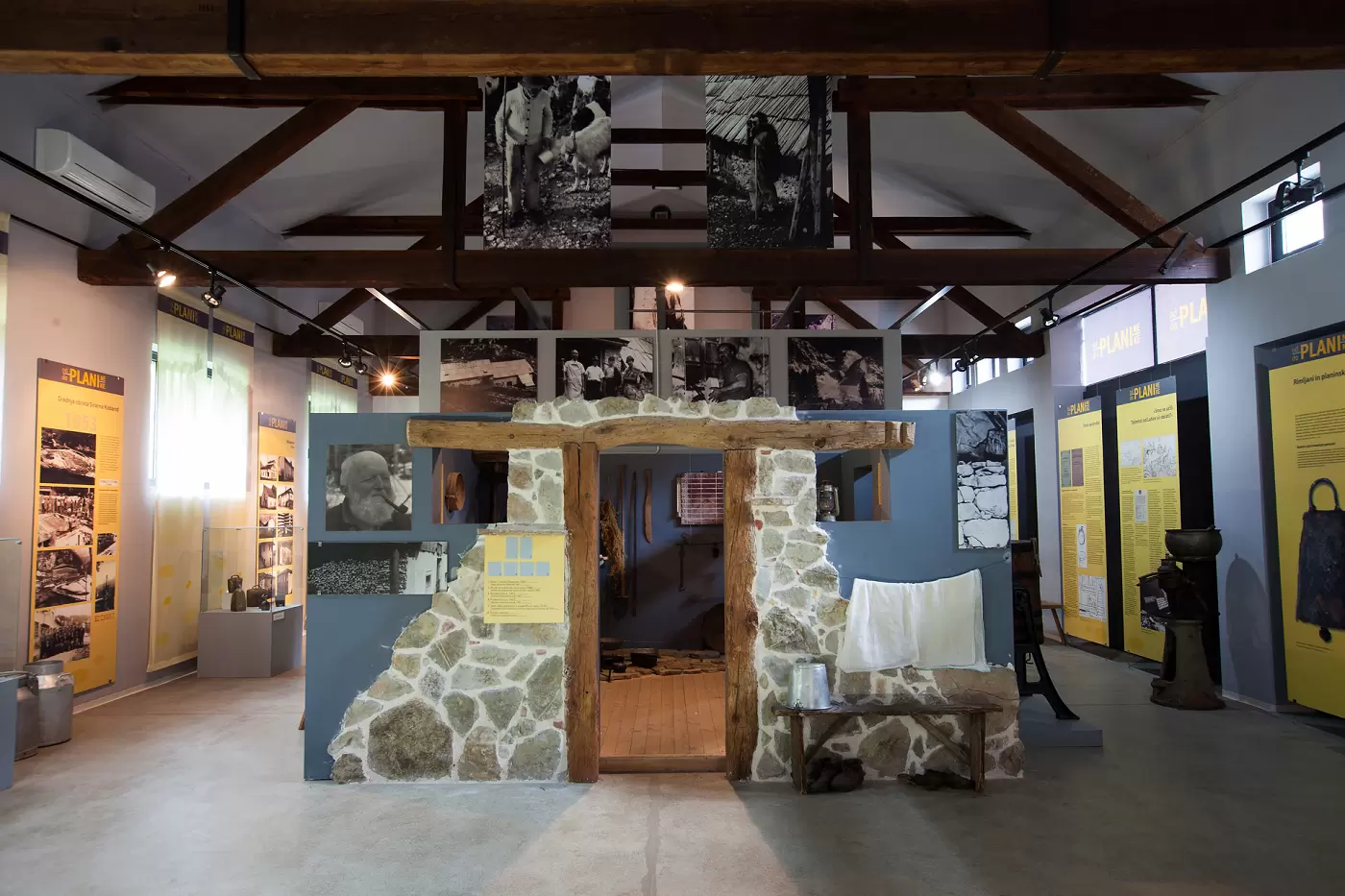Soča Evergreen: a year-round tourism strategy in the Soča Valley
The Soča Valley in Slovenia is a popular destination for outdoor tourism. However, the high seasonality of activities can have negative effects on the concentration of tourist flows, on sensitive natural areas and on the sustainability of jobs in the sector. The valley has therefore developed a comprehensive strategy to make the region a sustainable and attractive year-round destination.
Dependence on the summer season
Slovenia’s Soča Valley is a popular destination for tourists seeking mountain scenery and outdoor experiences, including water sports such as rafting. However, the area is a victim of its own success and faces over tourism: between 25,000 and 30,000 tourists visit the area every day in season, while only 18,000 people live in the Soča Valley and the neighbouring municipalities.
Although the region welcomes visitors all year round, the Soča Valley also faces the problem of seasonality. Indeed, 87% of arrivals and overnight stays are recorded in the period from May to September.
Over tourism is damaging the natural areas in the mountains. Moreover, the strong seasonality of the activity makes the sector dependent on the summer season and the maintenance of outdoor sports and therefore also less resilient in case of disruption of the activity, especially in relation to climate change.

A comprehensive strategy to make tourism more sustainable
In order to limit over tourism and its impacts on the mountain environment, the Soča Valley has set itself an ambition: to become a leading year-round destination in the Alps. In 2020, the valley adopted “Soča Evergreen” a Strategy for the Development and Marketing of Soča Valley Tourism 2025+. This strategy gives a framework for more sustainable tourism development in the coming years and covers the 4 most visited municipalities of the Soča Valley: Bovec, Kobarid, Tolmin and Kanal.
To transform tourism in the valley, the strategy adopts a holistic approach to tourism and addresses 4 main objectives:
- Develop a 4-season approach: building on the flagship sectors, such as water sports and outdoor activities, while developing other activities such as those related to heritage, maintaining year-round employment in the sector
- Improving the quality of the tourism offer: aiming for quality rather than quantity of stays, trying to extend the length of stays, focusing on the quality of the tourism offer and the diversity of the experiences offered
- Make tourism more sustainable: limiting the influx of tourists in sensitive natural areas, reducing the carbon footprint of tourism by increasing public transport and reducing the use of private cars, preserving the valley’s natural heritage
- Boost the recovery of tourism after the COVID-19 pandemic: strengthening the sector and supporting cooperation between stakeholders, using a new territorial marketing strategy to revitalise the activity, training stakeholders in the sector to meet the new expectations of visitors
Results
The Soča Valley strategy led to the implementation of a coherent marketing strategy on the territory and a reorganisation of the tourism offer. The communication about the valley has been completely redesigned in order to increase its reputation as a year-round destination. In order to develop a “4 seasons” approach, new activities are encouraged, such as wellness tourism, and offers have been launched such as weekend and New Year packages. The cultural offer has also been further developed to attract tourists all year round and the gastronomic heritage is better promoted, for example through the organisation of a culinary festival.
This strategy is also reinforcing the economic sustainability of the sector. Whereas tourism was more of a complementary activity, the aim is now to professionalise the sector by training staff and maintaining jobs all year round. An advisory service for tourism providers has been set up as well as a permanent training programme for employees in the sector.
The action plan includes a large number of other measures which are detailed in the strategy.

